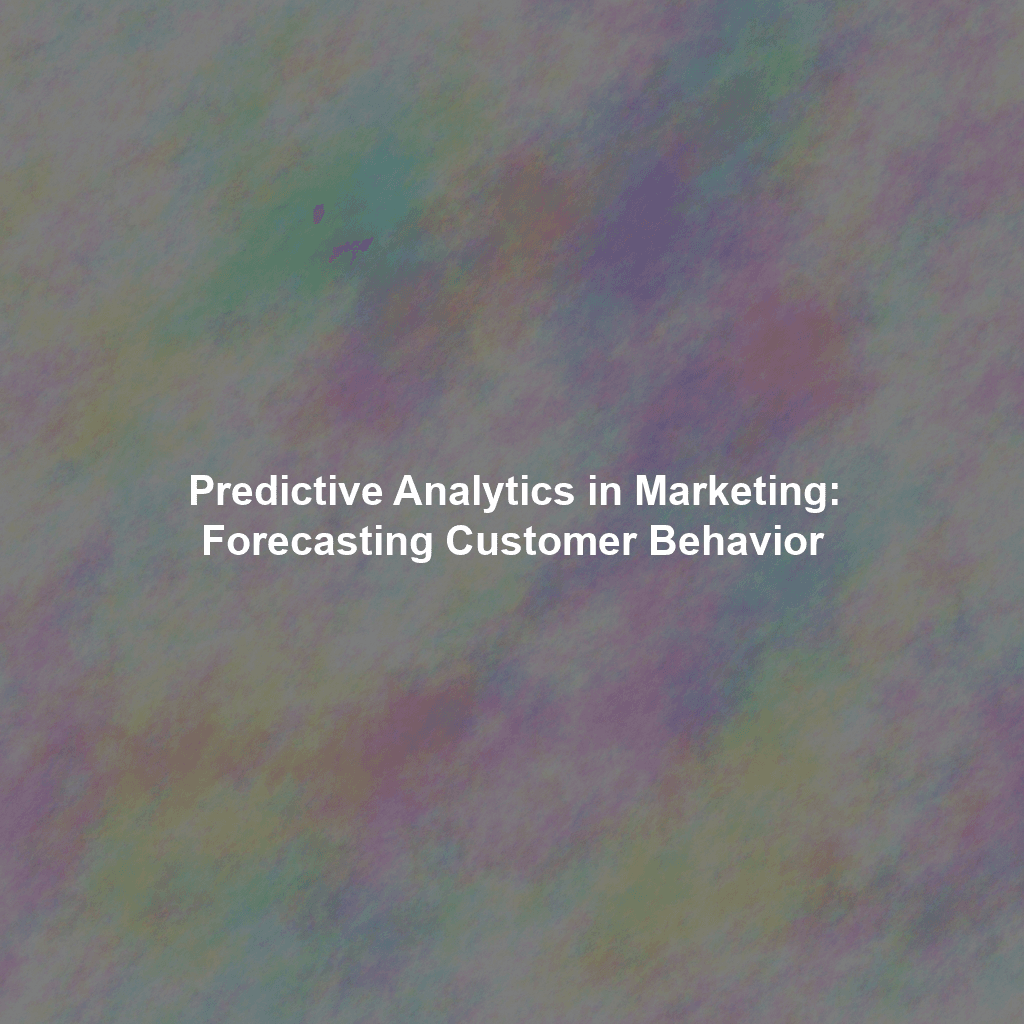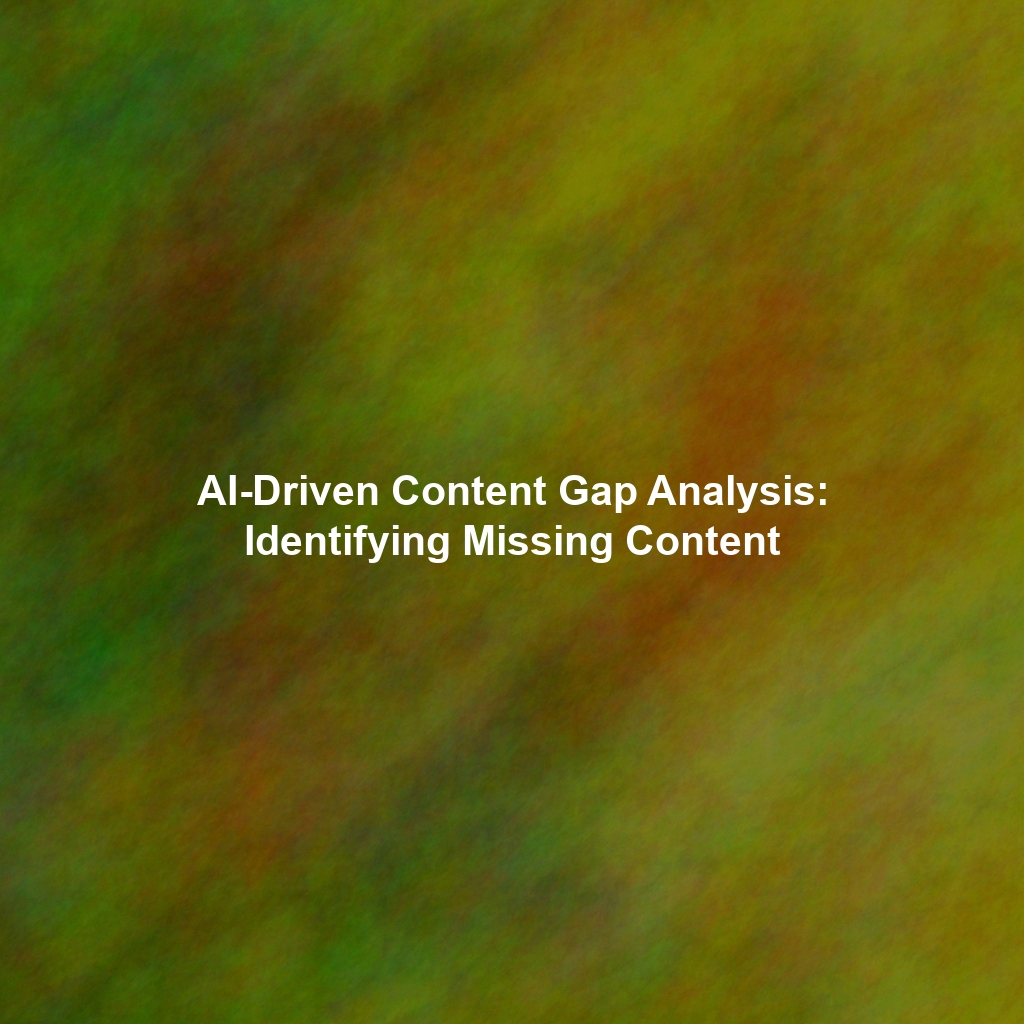The Crystal Ball of Marketing: Unveiling Predictive Analytics
In an increasingly competitive landscape, where customers are bombarded with marketing messages from every direction, understanding their needs and preferences is paramount. Predictive analytics provides the tools to achieve this, transforming vast datasets into actionable intelligence. This article explores the core concepts of predictive analytics in marketing, delving into its benefits, techniques, and practical applications, empowering you to unlock the potential of data-driven decision-making.
What Exactly is Predictive Analytics?
At its core, predictive analytics uses historical data, statistical algorithms, and machine learning techniques to identify patterns and predict future outcomes. In the context of marketing, this translates to forecasting customer actions, such as purchases, churn, engagement levels, and response to specific campaigns.
Think of it as building a model of your customer base, based on their past behavior and characteristics. This model can then be used to predict how similar customers will behave in the future. It’s about connecting the dots between seemingly disparate data points to reveal hidden trends and opportunities.
Key Components of Predictive Analytics
- Data Collection: Gathering relevant data from various sources, including CRM systems, website analytics, social media platforms, and point-of-sale data. The quality and completeness of this data are crucial for accurate predictions.
- Data Preparation: Cleaning, transforming, and preparing the data for analysis. This often involves handling missing values, removing outliers, and converting data into a usable format.
- Model Selection: Choosing the appropriate statistical or machine learning algorithm for the specific prediction task. Common models include regression analysis, classification models, and clustering algorithms.
- Model Training: Feeding the prepared data into the chosen model and allowing it to learn the underlying patterns and relationships.
- Model Validation: Evaluating the model’s accuracy and performance using a separate dataset (a “test set”) to ensure it generalizes well to new data.
- Deployment and Monitoring: Implementing the model in a real-world marketing environment and continuously monitoring its performance, making adjustments as needed to maintain accuracy.
The Sweet Rewards: Benefits of Using Predictive Analytics in Marketing
Adopting predictive analytics offers a multitude of benefits, transforming marketing from a reactive function to a proactive driver of business growth.
Enhanced Customer Segmentation
Instead of relying on broad demographic categories, predictive analytics allows for much more granular and personalized customer segmentation. By analyzing data on purchasing behavior, website activity, social media engagement, and other factors, marketers can identify distinct groups of customers with similar needs and preferences. This enables the creation of highly targeted campaigns that resonate with each segment, leading to higher conversion rates.
Improved Targeting and Personalization
Predictive models can identify the customers most likely to respond positively to a specific marketing message or offer. This allows for more efficient allocation of marketing resources, focusing efforts on the most promising leads and reducing wasted spend on less receptive audiences. Furthermore, by understanding individual customer preferences, marketers can deliver personalized content and offers that are more relevant and engaging, leading to increased customer satisfaction and loyalty.
Optimized Marketing Campaigns
Predictive analytics empowers marketers to optimize their campaigns in real-time. By tracking the performance of different campaign elements (e.g., subject lines, ad copy, landing pages) and using predictive models to forecast their impact, marketers can make data-driven adjustments to maximize effectiveness. This iterative approach allows for continuous improvement and ensures that campaigns are always performing at their best.
Reduced Customer Churn
Customer churn (the rate at which customers stop doing business with a company) can be a significant drain on profitability. Predictive analytics can help identify customers who are at risk of churning, based on factors such as declining engagement, negative feedback, or changes in purchasing behavior. This allows marketers to proactively intervene with targeted retention efforts, such as personalized offers, proactive customer service, or loyalty programs, to prevent churn and retain valuable customers.
Increased Marketing ROI
By improving targeting, personalization, and campaign optimization, predictive analytics ultimately leads to a significant increase in marketing ROI. Marketing resources are allocated more efficiently, conversion rates are higher, customer retention is improved, and overall marketing effectiveness is amplified. The ability to measure and attribute the impact of marketing activities becomes more precise, allowing marketers to demonstrate the value of their efforts and justify their budgets.
Diving Deeper: Common Predictive Analytics Techniques and Models
The effectiveness of predictive analytics hinges on the choice of appropriate techniques and models. Here’s a look at some of the most commonly used methods in marketing:
Regression Analysis
Regression analysis is a statistical technique used to model the relationship between a dependent variable (the outcome you’re trying to predict) and one or more independent variables (the factors that influence the outcome). In marketing, regression can be used to predict sales volume based on advertising spend, website traffic, and seasonality, or to estimate the impact of price changes on demand.
Classification Models
Classification models are used to categorize customers into different groups based on their characteristics and behavior. Examples include:
- Logistic Regression: Predicts the probability of a customer belonging to a particular category (e.g., whether they will click on an ad or not).
- Decision Trees: Creates a tree-like structure to classify customers based on a series of decisions (e.g., segmenting customers based on demographics, purchase history, and website activity).
- Support Vector Machines (SVM): Finds the optimal boundary to separate customers into different categories (e.g., identifying high-value customers).
Clustering Algorithms
Clustering algorithms are used to group customers into clusters based on their similarities. Unlike classification models, clustering algorithms don’t require predefined categories; they automatically identify groups of customers with similar characteristics. Common clustering algorithms include:
- K-Means Clustering: Partitions customers into K clusters, where each customer belongs to the cluster with the nearest mean (centroid).
- Hierarchical Clustering: Creates a hierarchy of clusters, starting with each customer in its own cluster and progressively merging them based on their similarity.
Time Series Analysis
Time series analysis is used to analyze data collected over time and identify patterns and trends. This can be used to forecast future sales, website traffic, or customer demand based on historical data. Techniques include ARIMA models, exponential smoothing, and seasonal decomposition.
Machine Learning Models
Machine learning models are algorithms that can learn from data without being explicitly programmed. They are particularly useful for complex prediction tasks where the relationships between variables are non-linear or difficult to define. Common machine learning models used in marketing include:
- Neural Networks: Complex models inspired by the structure of the human brain, capable of learning intricate patterns and making highly accurate predictions.
- Random Forests: Ensemble learning methods that combine multiple decision trees to improve prediction accuracy and robustness.
Predictive Analytics in Action: Real-World Marketing Applications
Let’s explore some specific examples of how predictive analytics is being used in marketing today:
Predicting Customer Lifetime Value (CLTV)
CLTV is a prediction of the total revenue a customer will generate throughout their relationship with a company. Predictive models can estimate CLTV based on factors such as purchase history, demographics, and engagement levels. This information can be used to prioritize marketing efforts on high-value customers and tailor retention strategies to maximize their lifetime value.
Personalized Product Recommendations
Predictive analytics powers personalized product recommendations on e-commerce websites and in email marketing campaigns. By analyzing a customer’s past purchases, browsing history, and demographics, models can predict which products they are most likely to be interested in. This leads to increased sales and customer satisfaction.
Dynamic Pricing
Predictive analytics enables dynamic pricing strategies, where prices are adjusted in real-time based on factors such as demand, competition, and inventory levels. Airlines, hotels, and retailers use dynamic pricing to optimize revenue and maximize profitability.
Lead Scoring
Predictive models can score leads based on their likelihood of converting into customers. This allows sales teams to prioritize their efforts on the most promising leads and increase their conversion rates.
Content Optimization
By analyzing data on how customers interact with different types of content, predictive analytics can help marketers optimize their content strategy. This includes identifying the most effective topics, formats, and channels for delivering content to specific customer segments.
Navigating the Landscape: Challenges and Considerations
While the potential benefits of predictive analytics are substantial, there are also challenges and considerations to keep in mind:
Data Quality and Availability
The accuracy of predictive models is heavily dependent on the quality and completeness of the data used to train them. Inaccurate or incomplete data can lead to biased predictions and poor decision-making. Organizations need to invest in data quality management processes and ensure that they have access to the relevant data sources.
Model Complexity and Interpretability
Complex models, such as neural networks, can achieve high levels of accuracy, but they can also be difficult to interpret. This can make it challenging to understand why a model is making a particular prediction and to identify potential biases. Marketers need to balance the desire for accuracy with the need for interpretability.
Ethical Considerations
Predictive analytics raises ethical concerns about privacy, fairness, and transparency. It’s important to use predictive models responsibly and avoid using them in ways that could discriminate against or harm individuals. Organizations should be transparent about how they are using predictive analytics and give customers control over their data.
Skills Gap
Implementing and managing predictive analytics requires a skilled workforce with expertise in data science, statistics, and machine learning. Many organizations face a skills gap in this area, which can hinder their ability to adopt predictive analytics effectively. Investing in training and development programs is crucial for building the necessary skills.
The Future is Predictable (Almost): Embracing Data-Driven Marketing
Predictive analytics is revolutionizing marketing, empowering marketers to move beyond guesswork and make data-driven decisions that drive business growth. By understanding the core concepts, techniques, and applications of predictive analytics, marketers can unlock the potential of their data and gain a competitive edge. While challenges exist, the rewards of embracing data-driven marketing are significant, leading to improved targeting, personalized customer experiences, optimized campaigns, and increased ROI. The future of marketing is predictable, not in a deterministic sense, but in the sense that we can now make informed decisions based on solid evidence, leading to more effective and efficient marketing strategies.
 Skip to content
Skip to content

